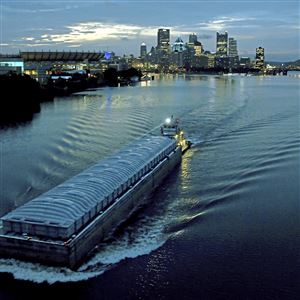On Oct. 4, Pennsylvania Gov. Tom Wolf will have an important decision to make: To stand up for clean water for the Ohio River and the 5 million people who depend on it for their drinking water or to side with polluters who want to eliminate a visionary pollution-control arrangement that has been in place for 70 years.
In 1948, the states bordering the river, including Pennsylvania, crafted a visionary regional compact to manage the Ohio River for its multiple uses — as an essential resource for manufacturing, industry and utilities, as well as a source of drinking water, recreation and home for fish and wildlife. The states wisely agreed to collaborate to protect the Ohio River for a simple reason: The actions of upstream communities like Pittsburgh have consequences for downstream communities such as Wheeling and Cincinnati.
That regional arrangement foreshadowed the kind of holistic, ecosystem-based management that is being used today to restore iconic waters across the country — from the Great Lakes to the Chesapeake Bay to the Gulf of Mexico.
Unfortunately, members of the regional body overseeing the Ohio River — known as the Ohio River Valley Water Sanitation Commission — are rethinking that visionary pollution-control agreement. There is a faction among the states of Illinois, Indiana, Kentucky, New York, Ohio, Pennsylvania, Virginia and West Virginia that want to scuttle the current oversight. Instead, they want states to manage their individual sections of the river, a piecemeal approach that rejects collaborative oversight and creates duplication, with each state setting its own standards.
Scrapping the regional pollution arrangement would be a huge step backwards for the Ohio River Valley.
First, jettisoning the pollution-control standards would open the door for more pollution. States would have free rein to weaken clean-water protections at a time when communities continue to grapple with cleaning up the Ohio River and its tributaries. Sewage overflows, toxic contamination, polluted farm runoff and acid mine drainage still threaten the river — resulting in lost recreation, fish consumption advisories, lost recreational opportunities and health warnings. We need greater protections — not fewer — for this iconic, 981-mile waterway.
Furthermore, the abolishment of the cooperative agreement would set the stage for inconsistent pollution-control standards. Two states on different sides of the same stretch of river — say, Ohio and Kentucky — could allow different levels of pollution into the same section of the river. This makes no sense for managing the health of the river, protecting the health of people and providing a level playing field for businesses.
Asking states to take on this important role ignores the reality that over-burdened and understaffed state agencies are already scaling back important environmental monitoring and assessment work. Scuttling the regional pollution standards will likely result in state officials taking the path of least resistance — weakening clean water standards.
Pennsylvania has a special role to play. The Ohio River is formed by the confluence of the Allegheny and Monongahela rivers at Pittsburgh. In many ways, the Keystone State’s treatment of the river sets a precedent for other states to follow.
Pittsburgh has been a shining example nationally for its transformation over the past 30 years — a transformation that involved both economic investment and a re-thinking of its relationship to the rivers that define it. Economic restoration has gone hand-in-hand with environmental restoration. The results have been economic growth and bustling riverfront activities, including kayaking and boating. Communities downstream the Ohio River can embrace similar redevelopment efforts — but not if the region turns back the clock to an age where we treated our waters as sewers and garbage dumps.
That’s why we urge Mr. Wolf and Pennsylvania’s commissioners on the Ohio River Valley Water Sanitation Commission to uphold regional clean-water protections for the Ohio River and to vote Oct. 4 to protect the drinking water, economy and way of life for the millions of people in the Ohio River Valley.
Gail Hesse serves as director of the water program for the National Wildlife Federation Great Lakes Regional Center.
First Published: September 23, 2018, 4:00 a.m.

















